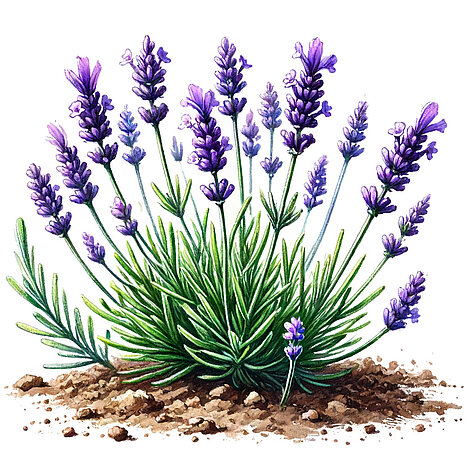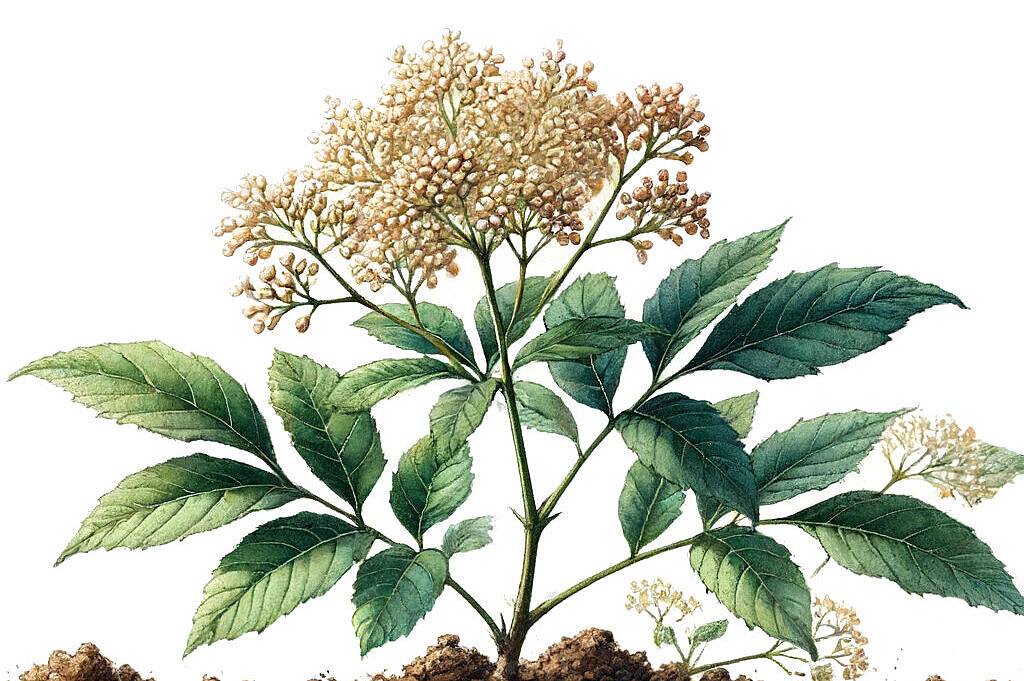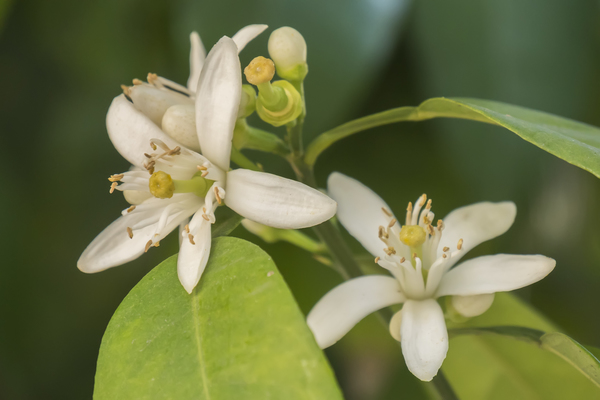Lavender

What is lavender?
Lavender is a plant genus that belongs to the labiate family. There are around 30 different types of lavender, which differ in appearance, fragrance and ingredients. The best-known species is true lavender (Lavandula angustifolia), which grows mainly in southern Europe and North Africa. It has purple flowers on long stems and narrow, gray-green leaves. Lavender essential oil is extracted from the flowers and is used in cosmetics, perfumery and aromatherapy.
What are the benefits of lavender for dogs?
Lavender can have some positive effects for dogs when used correctly. Here are some examples:
- Lavender has a calming, anxiety-relieving and relaxing effect on dogs. It can help to reduce stress, calm the nerves and promote sleep. This can be helpful, for example, for anxious or nervous dogs, when traveling or during New Year's Eve celebrations.
- Lavender has an antibacterial, anti-inflammatory and pain-relieving effect on the skin. It can be used on small wounds, burns or insect bites to promote healing and prevent infection.
- Lavender has an insect repellent and antiparasitic effect. It can keep away or control ticks, fleas and other pests. This can serve as a natural alternative to chemical products, for example.
What are the disadvantages of lavender for dogs?
Lavender is not generally toxic to dogs, but it can have negative effects if used incorrectly or too much. Here are some examples:
- Lavender can trigger allergic reactions. Some dogs can react sensitively to the essential oils and develop skin rashes, itching or breathing difficulties. This can happen, for example, on direct contact with the plant or the oil.
- Lavender can cause symptoms of poisoning. Some types of lavender contain more toxic substances than others, for example spikenard or lavandin. If dogs eat or inhale too much of it, they can show symptoms such as vomiting, diarrhea, tremors or convulsions. This can happen, for example, if the plant or oil is ingested in an uncontrolled manner.
- Lavender can impair the sense of smell. Dogs have a very keen sense of smell, which is important to them. If they are constantly exposed to the strong scent of lavender, this can disrupt or overstimulate their perception. This can happen, for example, if it is used too intensively or continuously.
How to use lavender correctly?
If you want to use lavender for your dog, there are a few things you should bear in mind:
- Choose the right variety. It is best to use only true lavender (Lavandula angustifolia), which is the least toxic. Avoid hybrids such as lavandin or spike lavender, which contain more toxic substances.
- Use only high quality oil. Only buy pure lavender essential oil from controlled cultivation and without additives. Avoid synthetic or perfumed oils, which can be harmful.
- Only use diluted oil. Always mix the lavender oil with a carrier oil, for example sunflower oil, in a ratio of 1:10. This is gentle on your dog's skin and nose.
- Only use small amounts. Apply just one or two drops of the diluted oil to your dog's skin, coat, collar or blanket. This is enough to achieve the effect.
- Use only occasionally. Don't expose your dog to lavender scent all the time, but only when needed or as a cure. Always give him the opportunity to withdraw from the scent if he does not like or tolerate it.
- Observe your dog. Pay attention to how your dog reacts to the lavender. If he shows signs of discomfort, allergy or poisoning, stop using it immediately.
Lavender can have both advantages and disadvantages for dogs. It can have a calming, healing and protective effect, but it can also be allergic, toxic and irritating. If you want to use lavender for your dog, you should inform yourself well, choose the right variety and quality, dilute the oil and dose it sparingly and observe your dog.
If you notice any signs of hypersensitivity or poisoning in your dog, you should see your vet immediately. We are not a substitute for a vet, but we try to be as accurate as possible. Every dog reacts differently and we recommend you get a second opinion or consult your vet if in doubt.
Stay healthy and take good care of your four-legged friend!😊
Similar to Lavender
Elderflowers have a number of positive effects on dogs, mainly due to their high content of flavonoids, vitamin C and essential oils. These ingredients can help to strengthen the immune system,...
Rose blossoms are the leaves of the rose plant, which belongs to the rose family. There are many different varieties of roses, which vary in color, shape, size and fragrance. Most rose blossoms are...
Hibiscus belongs to the mallow family and comprises several hundred species. The best-known species is Hibiscus sabdariffa, also known as roselle or karkade. This species has red calyxes that can be...
Orange blossom is the flower of the orange tree, which belongs to the citrus family. The flowers are white, star-shaped and have an intense orange scent. They grow in panicles at the ends of the...



